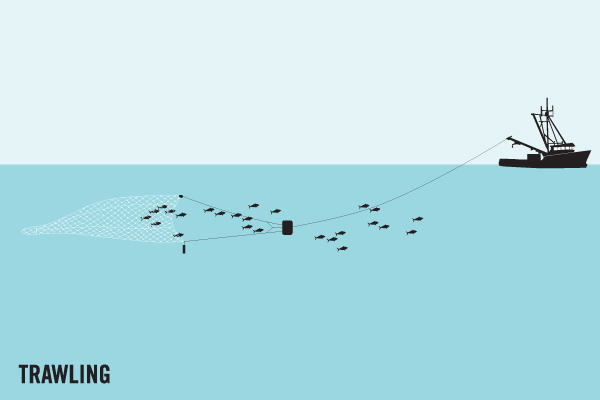Average Weight/Length
Generally, the size range is from 3 to 15 pounds. Snook weighing 20 to 30 pounds are not unusual on either coast, especially around inlets and passes during the summer, when spawning takes place. A number of Snook topping 40 pounds have been caught over the years on both coasts, and the maximum may be 60 or more. World record 53 pounds, 10 ounces;
Other "Popular" Names for this Fish
Lineside, Robalo, Ravillia
Location Habitat
The Common Snook are the most widely distributed species within the Centropomus genus and have been reported as far north as New York and throughout the Gulf of Mexico. Snook are abundant along the Atlantic coast of Florida from Cape Canaveral south through the Keys and Dry Tortugas, and north to Cedar Key on the gulf coast. snook occur infrequently along the coast of Texas to Galveston and then more or less continuously south to Rio de Janeiro, Brazil. Juvenile snook are generally restricted to the protection of riverine and estuary environments. These environments offer shallow water and an overhanging vegetative shoreline. Juvenile common snook can survive in waters with lower oxygen levels than adults. Adult common snook inhabit many environments including mangrove forests, beaches, river mouths, nearshore reefs, salt marshes and sea grass meadows. Adult common snook appear to be less sensitive to cold water temperatures than larvae or small juveniles. The lower lethal limit of water temperature is 48.2°-57.2° F for juveniles and 42.8°-53.6° F for adults. Adults inhabit coastal waters, estuaries and lagoons, penetrating into freshwater; usually at depths less than 20 m. Feed on fishes (Gobiidae, Gerreidae, Engraulidae) and crustaceans (shrimps and crabs). Mature individuals congregate at mouths of passes and rivers during the spawning season, May through September. Seasonal movements into freshwater occur but poorly understood. Marketed fresh. Valued game fish and an excellent food fish. The world record for hook and line is a 53-lb., 10 ounce fish caught at Parismina Ranch, Costa Rica
Biology & Physical Description
Snook have a slender body and a distinct lateral line. The dorsal fins are high and divided and the anal spines are relatively short. Snooks have a sloping forehead with a large mouth and a protruding lower jaw. Adult snook can grow to over 47.24 inches in total length, which is larger than any other species in this family. Coloration of the common snook is golden yellow with a distinct black lateral line and pale yellow pelvic fins. Snooks lack teeth on the maxillae. There is a band of fine teeth located on the premaillae and the dentaries. The palatine bone has a narrow band of teeth on it and the ectopterygoid bone located behind the palate may or may not have a tooth patch associated with it. Snook on the Atlantic coast of Florida commonly grow to larger sizes than common snook on the gulf coast of Florida. The largest observed sizes for females on the Atlantic and gulf coasts are 43.5 inches and 40.6 inches. Dorsal spines (total): 8 - 9; Dorsal soft rays (total): 10; Anal spines: 3; Anal soft rays: 6. 67- to 72 pored scales on lateral line to base of caudal fin (Ref. 26938). Black lateral line
Geographic Species Map (Fishbase.org Map)
|
|

|
Summary of Distribution: Western Atlantic: southern Florida (USA), southeastern coast of the Gulf of Mexico, most of the Antilles and Caribbean coast of Central and South America extending southward to Rio de Janeiro, Brazil; also North Carolina and Texas, USA |
|
Note: Distribution range colors indicate degree of suitability of habitat which can be interpreted as probabilities of occurrence (fishbase.org) |
|
Sport Fishing Techniques
|
|
Kite Fishing (Trolling)Kite Fishing Trolling is when you are.... |
|
|
|
River DriftRiver Drift means to use the.... |
|
|
|
TrawlingTrawling is when.... |
|
Tackle & Baits
Even though spinning and baitcasting tackle are the most used, light saltwater boat rods get plenty of action, particularly when live-baiting in passes and inlets. Even heavier gear often gets the call for fishing from piers and bridges. Surf tackle can be useful at times, although surf Snook are usually close to the beach, in easy range of casting gear. Fly fishermen take their Snook on large streamers and poppers, for the most part, while hard-lure casters rely heavily on mirror plugs, bucktail and plastic jigs, jerk plugs, spoons and topwater lugs. Any small fish makes good live bait, as do live shrimp and crabs.
Game Rating
Game Rating : 9/10
Game Description :
One of the best for all-around fighting ability. The fight is usually featured by several long runs and a few jumps. Small Snook leap high in the manner of Ladyfish, while the really big females manage to clear only about half their bodies. Snook also are past masters at utilizing shoreline roots or any other obstructions to their advantage.
Food Rating
Game Rating : 7.5/10
Game Description :
Snook are proportionately very thick through the shoulders, and their fillets represent a higher portion of total weight than most other fish. The fillets are mild yet flavorful and are ranked at the top of nearly everyone's list of favorite fish.
Picture (Fish)
|
|
|
|
|
|
|
|
Picture Mount
|
|
|
|
|
|
|
|
|
Product Specs
Available Sizes: 12" - 50"
Details: Fired-Enamel Glass Eye
Product Options: Wood Plaque, Custom Base, 360°




















 Snook (Common)
Snook (Common) 

.jpg)













